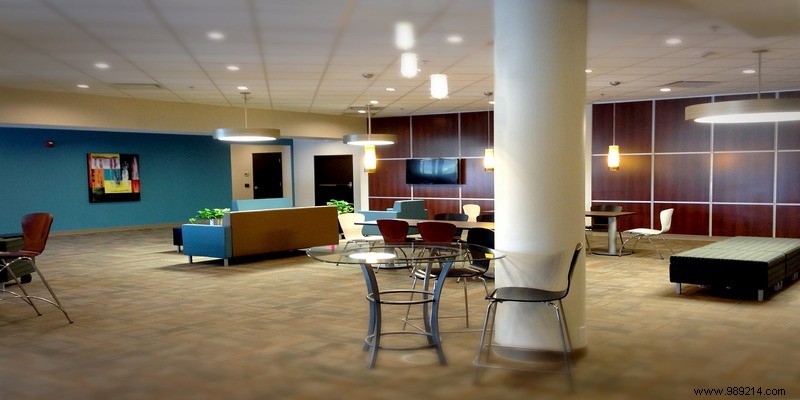Here are nine great ergonomic improvements to get you started.
Too often the office chair is too high, too tall or too deep.
The problem is that your legs and feet don't get the right support, and this tends to throw your whole body out of alignment. Your lumbar spine also doesn't get the right support and the weight of your arms ends up pulling on your neck and shoulders.
If your office chair is too low, more pressure is put on your wrists and hands because the hand-wrist-elbow alignment is out of balance.
Get an ergonomic chair or improvise by adding a footrest or lumbar support cushion.
The best ergonomic office chair will allow you to adjust the seat depth, back height, seat tilt and back tilt.
One of the best on the market is the Herman Miller Aeron, which comes with eight different tension zones for precision comfort. Each zone is ergonomically designed to adapt to different parts of your body.
Nothing strains your eyes and causes headaches like bad lighting.

Live houseplants like African violet, wood sorrel, English ivy or lucky bamboo enhance calm and add color to the workplace.
Computer screens are mobile, so it should be easy to adjust them to the optimal distance and height.
This not only helps you work better, but prevents eye strain and neck pain, among other possible problems.
Once installed at your desk, adjust the height of the monitor to the center of the screen (using an adjustable monitor stand will help) or just below eye level. As for distance, if you can reach your hand toward your monitor with your shoulder still aligned, keep it that way.
A cluttered workspace creates obstacles to concentration and productivity. Clutter dominates your mind, creating more stress as you feel pressured as you stare at the piles of papers and stationery floating around your desk.
The remedy is to eliminate or organize it.
Eliminating it makes you feel less exhausted, overwhelmed and depressed. Organizing it in visible and coordinated filing and storage systems helps you find things easily.
A breakout area is a great place to enjoy a bit of nature, or lay back and gaze at the colorful art on your wall.

A change of environment will always give your body and mind a well-deserved break.
For larger offices, a full-fledged living room that doubles as a casual coworking space helps inspire creativity and encourage collaboration.
Whether you get the fanciest chair and desk or the best equipment in the world, none of this will help you if your posture is awkward.
The basics are both feet supported by the footrest or floor, shoulders relaxed, and wrists even with the elbows. Your back should also be against a backrest with spinal support.
Sit up straight and as close to the edge of your desk as possible. Make sure everything you need is close at hand to stay in proper alignment.
Be sure to take breaks, as sitting for long periods of time is a health risk.
Did we miss a good idea to improve the ergonomics of the work area? We'd love to hear your thoughts. Share with us below.